Olympians Shaun White, Red Gerard, and Dusty Henricksen Talk 2022 Beijing at Mammoth’s US Snowboarding Grand Prix
Mammoth Mountain recently set the stage to host the US Grand Prix—the last US Olympic Snowboarding Team Qualifier event before the US Olympic Slopestyle Snowboarding Team is announced and athletes head off to the 2022 Beijing Olympics. Having hosted the Grand Prix more than a dozen times, Mammoth has run final qualifying events in 2014, 2018, and now in 2022.
A famed stomping ground for Olympians since 1998 (the first year the Olympics hosted Snowboard Halfpipe as an official event), Mammoth’s long list of snowboarding regulars includes Kelly Clark, Danny Kass, Tommy Czeschin, Shaun White, Greg Bretz, Jamie Anderson, Maddie Maestro, Chloe Kim, Red Gerard, and now Dusty Henricksen. All can attest to Mammoth Mountain’s Unbound Terrain Parks setting the bar.
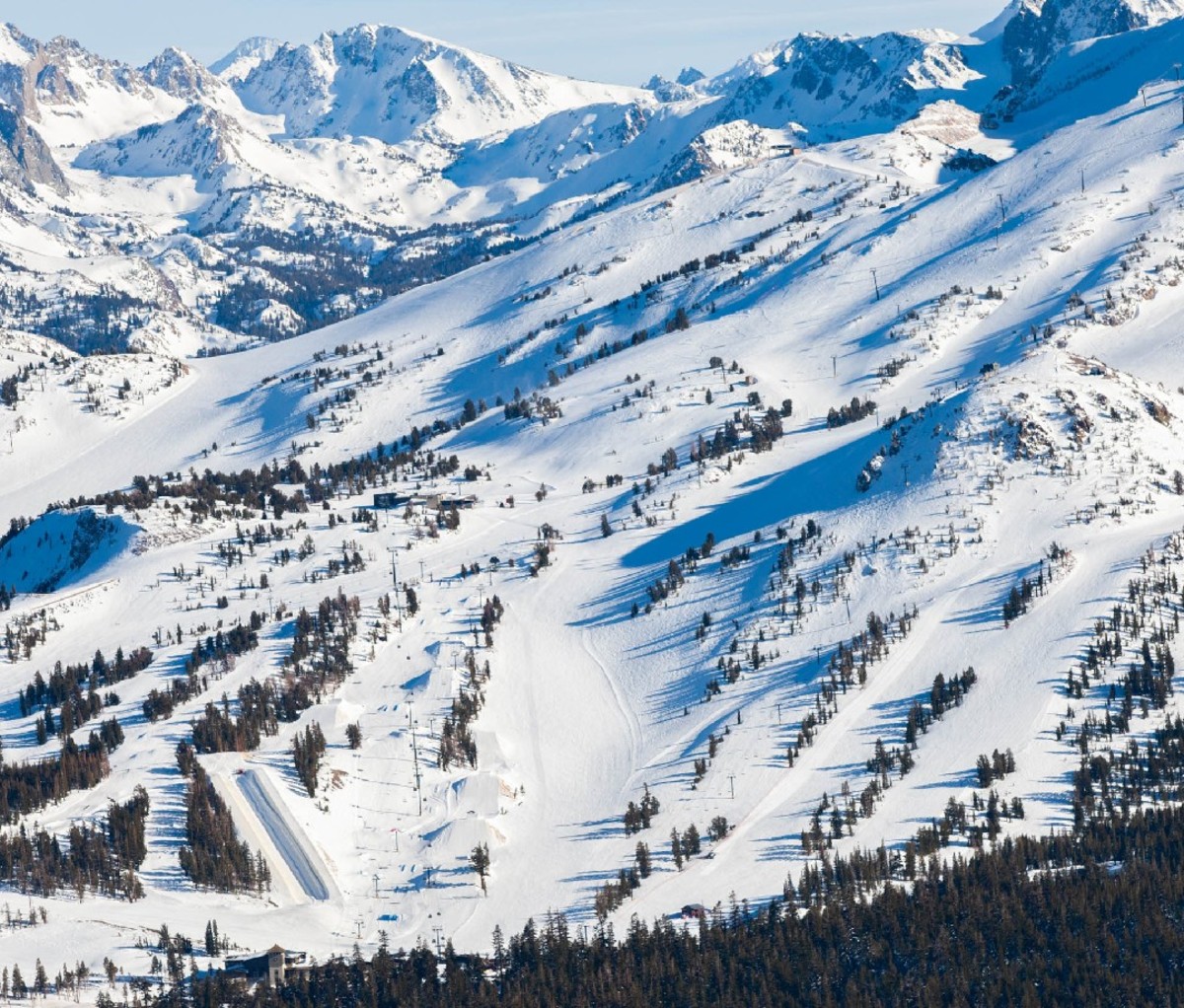
The staff at Mammoth Mountain is no stranger to being Olympic team players and pulling off Gold Medal performances under pressure. Less than a month before the Grand Prix, snow resources were low and came way too close to jeopardizing the opportunity to host these Olympic hopefuls.
“This year marks the 9th US Grand Prix I’ve been a part of to see the evolution of Slopestyle courses—and trying to come up with creative ways to challenge not only the athletes but also the builders year after year is an extremely tall order,” says Scott Cherry, Mammoth’s Director of Slope Maintenance and the Unbound Terrain Parks, who adds that ultimately it all comes down to Mother Nature. “With such limited resources, warm temperatures, and minimal snowmaking, we were really concerned about being able to pull off an Olympic quality event.”
Thankfully, the snow arrived just in time—a lot of it—over the last two weeks of December. “With 160 inches of snow and working 24/7, we were able to exceed our own expectations and build two venues worthy of hosting an Olympic quality event,” says Cherry.
It took ten snowcats to build the Grand Prix, five snowcats on the Superpipe, and another five for the Slopestyle course. According to Cherry, Mammoth worked 1,900 hours on the course builds. That included 12 Unbound park staff and 14 snowcat operators. There were also consultations with the athletes themselves.
“The Unbound department has very personal relationships with all of these athletes—and an open door policy to encourage their feedback,” says Cherry. “Brock Crouch and Dusty [Henricksen] helped us test the courses, and we all got together to discuss any necessary changes. Our product reflects the relationships we have with some of the best riders in the World. It’s extremely rewarding to see our local riders do so well on an Olympic level.”
Men’s Journal caught up with three of the biggest names in US Olympic snowboarding during the intense lead-up to Beijing 2022 at Mammoth: Gold Medalist, Red Gerard, who has been training at Mammoth most of his career; Olympic rookie and Mammoth Lakes local, Dusty Henricksen; and three-time Superpipe Olympic Gold Medalist, Shaun White, who could be headed to his fifth Olympics.

Red Gerard, 21, Silverthorne, CO
US Olympic Slopestyle Snowboarding Team
Gold Medalist, 2018 PyeongChang Olympics
Men’s Journal: How does it feel to be here in Mammoth for the US Grand Prix?
Red Gerard: Awesome. Just getting back in the circle with everything that’s been going on and all the unknowns feels great. Having contests planned and knowing where you’re gonna be throughout the season is massive right now—and being in Mammoth has always been cool. I grew up watching Brock Crouch, Gabe Ferguson, Judd Henkes, and all those guys riding here—you’d see them at the end of the season here hitting these huge jumps. There’s always a lot to do here and a ton of progression going on.
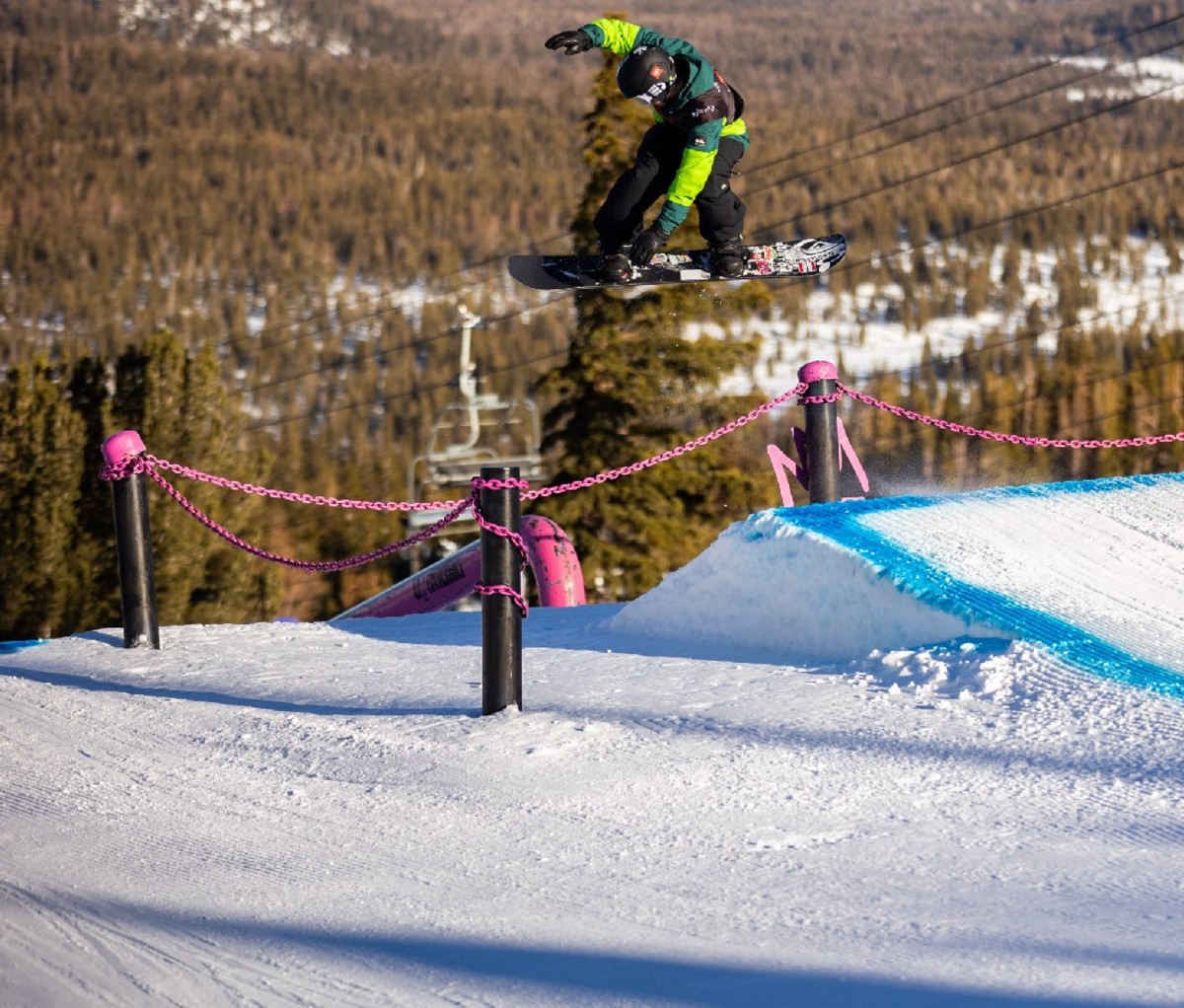
You’ve already been through one Olympic ringer—pulled out with the highest success—and now you’re coming back for your second one. How does it feel to be heading to Beijing as the reigning Gold Medalist for Olympic Slopestyle Snowboarding?
It feels good, to be honest. Not so much with where we’re standing right now with the virus, but other than that I’m feeling really good and ready to go over there and snowboard my best. I had such cool peers during the last Olympics. I really had no clue what it was gonna be like, how big it would be, all the media and everything else, and they really watched over me. The US team is a different one this time, with new kids coming in. Now I want to be that guy who they can put their trust in and ask me anything about the Olympics—because they don’t really teach you much about it going in and it can be pretty surprising.
With all of that Olympic experience behind you from 2018, do you have any expectations for the Beijing Olympics?
PyeongChang [South Korea, 2018 Winter Olympics] was a really creative course for its time. That was when the side hits were really starting to come around. That course was probably one of the more creative Slopestyle courses I’ve snowboarded to date. I think China and this year’s Olympic Committee will be holding themselves to that standard at making a solid, creative course. There’s been a test event over there and I’ve talked to some friends who said it was insane—just massive snow sculptures built. So I think it will be quite cool.
As far as our team goes, the is the strongest one I’ve ever seen for US Slopestyle. We had two months over in Europe early season where I was constantly impressed. Every single person was learning a new trick. We were all riding constantly, pushing each other, feeding off each other in really good ways. We’re all about the same age going in this time, so I think it’ll be a lot of fun. The really cool thing over the past two years has been seeing all of us grow. It is about us, but it is also about this team, and we’re all supporting each other nonstop to the top!
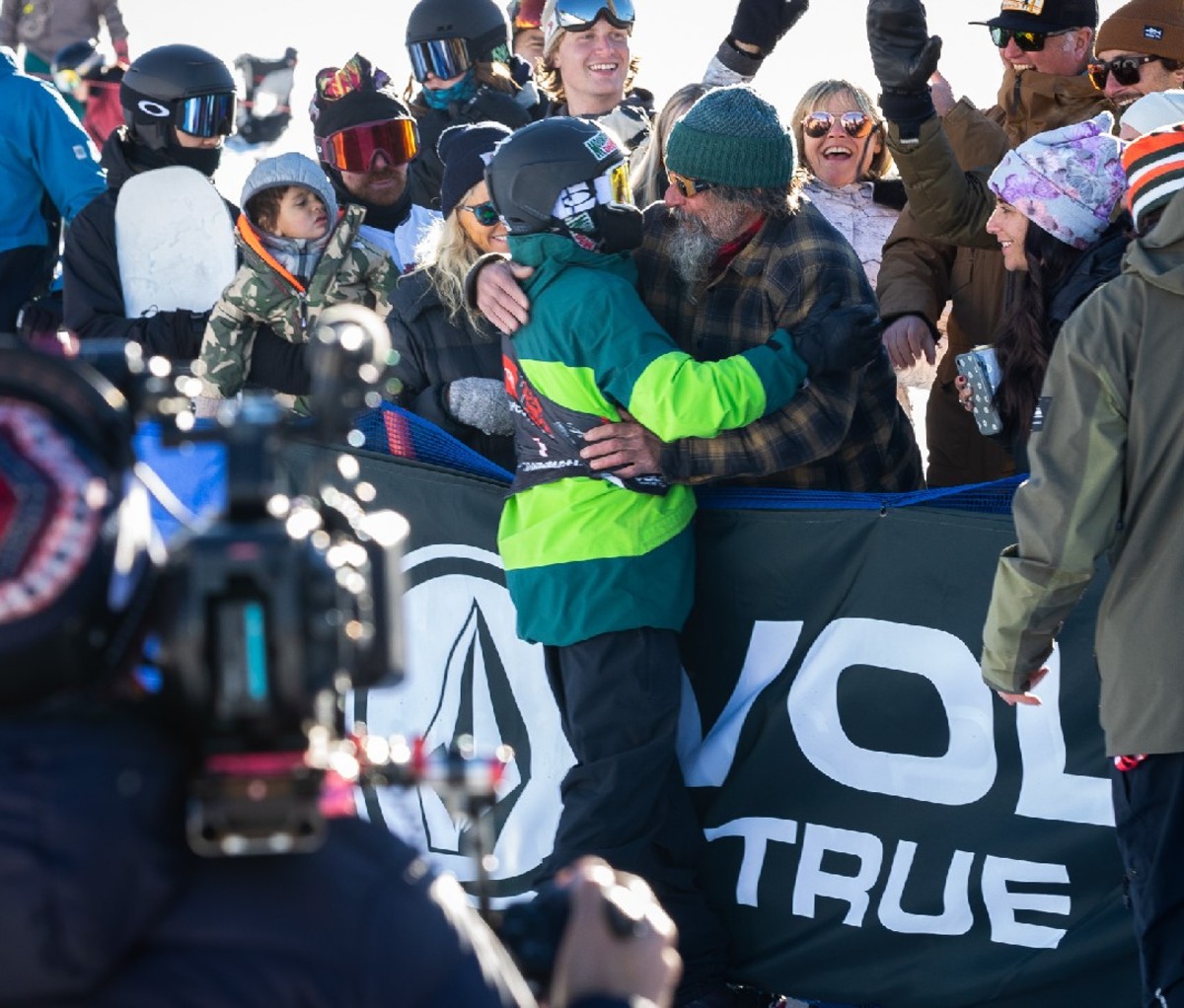
What do you love the most about Slopestyle?
The great part about Slopestyle is that you never have the exact same features in any contest. It’s always different. There can be transition features involved, an array of jibs and rails, side hit take offs, and just a line of classic jumps. When you’re going into to a Slopestyle competition, you really have no clue what’ll show up until that first practice day. That’s where I find Slopestyle snowboarding so cool. You’re dealt whatever cards are given—and then you’re like, okay, well I know maybe this doesn’t really suit my riding the best but I have to make something up so my run works on this course. The way I look at it, I take my time through it. We get a good chunk, two days, of time for practice, weather permitting. Before going, I have ideas of tricks that hopefully will work. After that, I look around the course, see what’s unique in a way that speaks to me, suits my riding the best, and go from there.
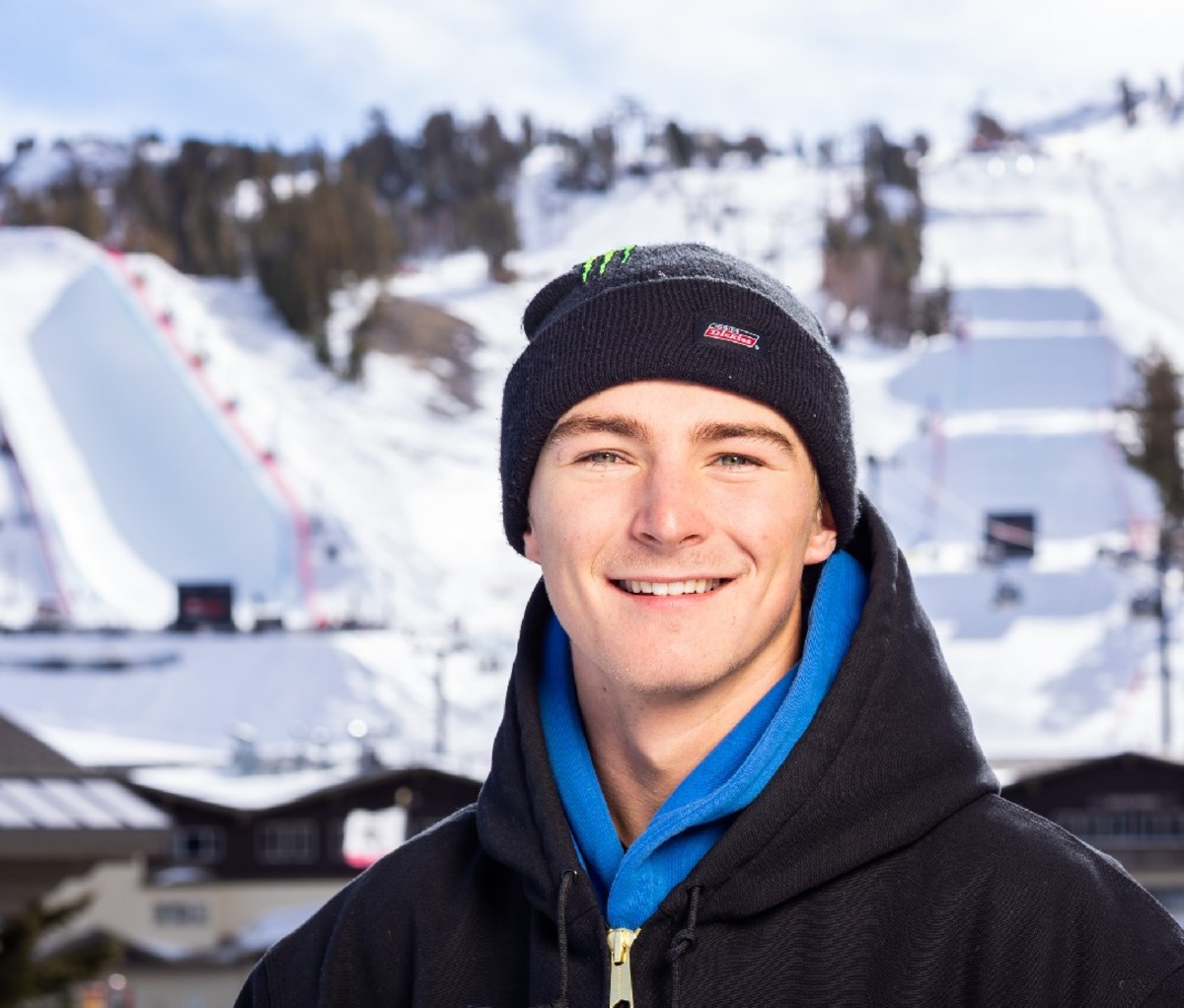
Dusty Henricksen, 18, Mammoth Lakes, CA
US Olympic Slopestyle Snowboarding Team.
Dusty—you’re based here in Mammoth. It’s quite the hub for breeding talented Olympic snowboarders. How’s your season been so far?
Dusty Henricksen: It’s been fun going to all the contests. We’ve been kind of getting worked with the weather but I can’t complain. We get to travel around and snowboard. It’s the life for sure and it never gets old. Yesterday in Mammoth was actually the best day I’ve had all season. It was phenomenal weather and we’re riding on this amazing Slopestyle course for the Grand Prix. It was so fun.
You’ve snowboarded the world’s best resorts and parks. What is it about Mammoth and it’s Unbound terrain parks that pushes you to ride at peak level?
This is where my family moved [from Big Bear, CA] when I was about 12 because I needed to snowboard bigger jumps. Until then, my dad was driving us up here every single weekend to do the USASA contests. Mammoth pretty much in every way shape or form is perfect in my opinion. With Main Park especially, It’s just one lift and I like those laps. They’re fast. You have plenty of speed to do what you need to do on the jumps. Everything is so big and crazy, but it’s all pretty flowy so it works well and isn’t too scary. Plus you have everything at your fingertips here. Six terrain parks, plus awesome freeriding terrain and huge backcountry. Whatever you want to do to get rad. Snowboarding Mammoth is a pretty easy decision to make.
You battled it out on the Slopestyle tour to land on the Olympic Team with such skill, talent and style. Speaking of which, at the 2020 US Open of Snowboarding—how did you pull off that backside Quad Cork 1800?
That was a last second decision, honestly, I had no plans. I closed my eyes and I was just was like—oh, I got it. I was so baffled to get the 4th rotation around but I butt checked. I’d been doing Triple Corks all week and that was the only time I really felt like I had enough airtime for the Quad Cork. In the final round at The Open, I landed the whole run before the last jump and felt it was Go Time. That was kind of the deal for me.
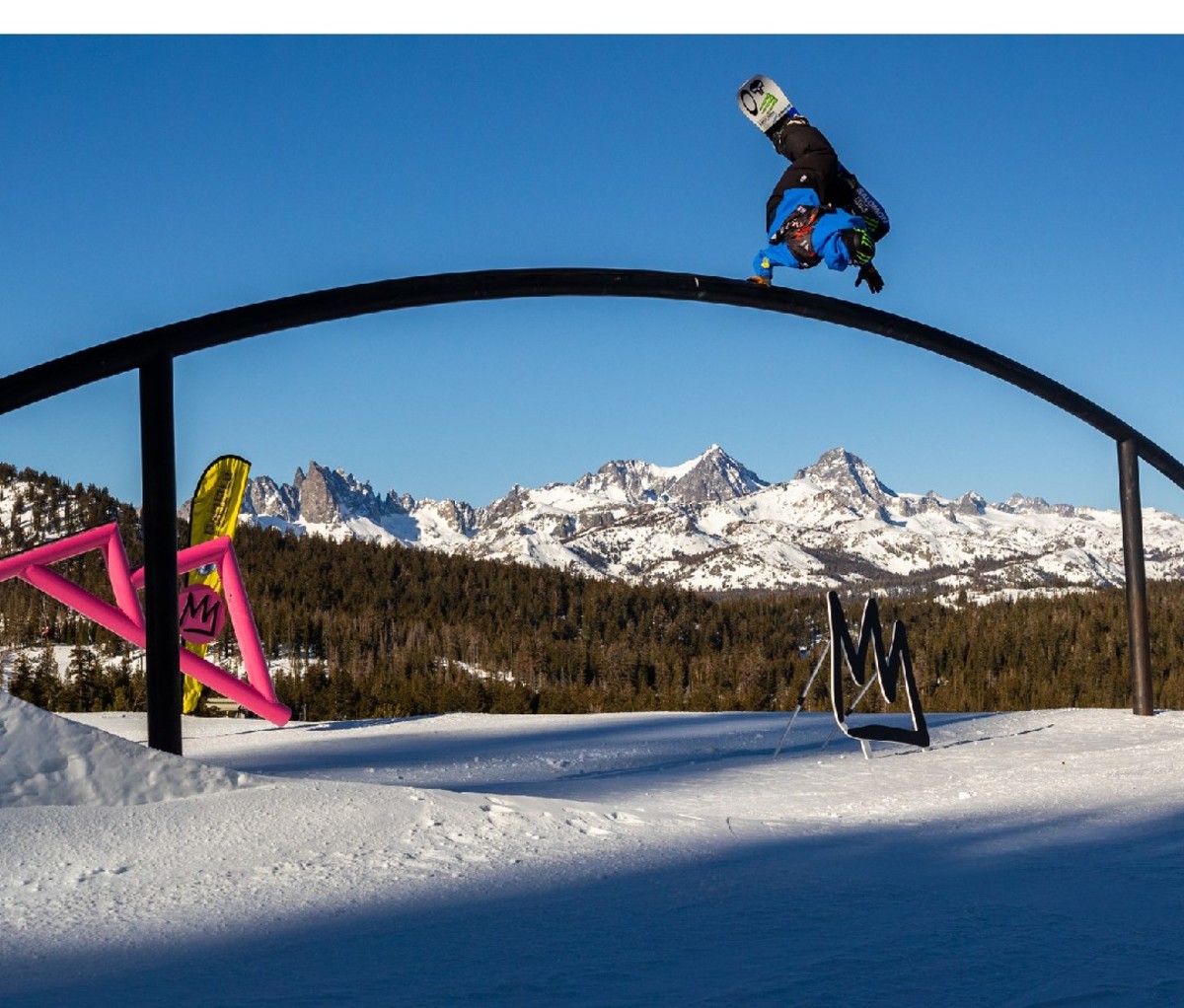
Have you done another once since then?
No. I’m trying to learn other tricks that are a little more unique in the lesser degrees while focusing more on style. There’s so many other possibilities of things that can be done before four rotations.
Any specific snowboarders who inspired you to push for the podium in Slopestyle?
I grew up looking up to the people I rode with in Big Bear. That was Lucas Magoon and Chris Bradshaw. They were the heavies, the big dogs on campus. I rode with Bear Mountain’s Sunday in the Park crews whenever I could. They were super welcoming and wanted to help me learn as much as I could. After we moved to Mammoth, contests kicked in, and then it was my friends Judd Henkes & Brock Crouch who were my mentors. They were doing the Slopestyle thing. I feel the reason I switched over was because I was riding Slope one season, learned a bunch of double cork spins, and was super-stoked.
How about snowboarding with Red Gerard on Team USA?
Red is the man. He’s been an idol of mine ever since first watching him snowboard. He’s accomplished so much so early on in his career—and that’s what motivated me to make it to the Olympics by age 18. He’s helped unlock so many possibilities in my mind about snowboarding. Being on the team with Red is nothing but great times and good vibes!
In a nutshell, what does the chance to represent US Slopestyle Snowboarding mean to you?
It’s been one of my dreams since I started this whole mission when I was five. I never really believed it until recent years, but that’s always been the goal. Those USASA contests qualified me for the Rev Tour. Then the Rev Tour advanced me into the World Cup. And now to be going to the Olympics is hard to believe. When I’m on the flight to China, I think that’s when it’ll hit me. It’ll be wild to perform on that stage and reach that amount of people especially from a career standpoint. Shaun [White] has been able to make a full career out of it. He’s a super nice guy, and living large. He created that for himself and I really look up to him in the way he managed his whole career. I feel super-blessed to be going to the Olympics.
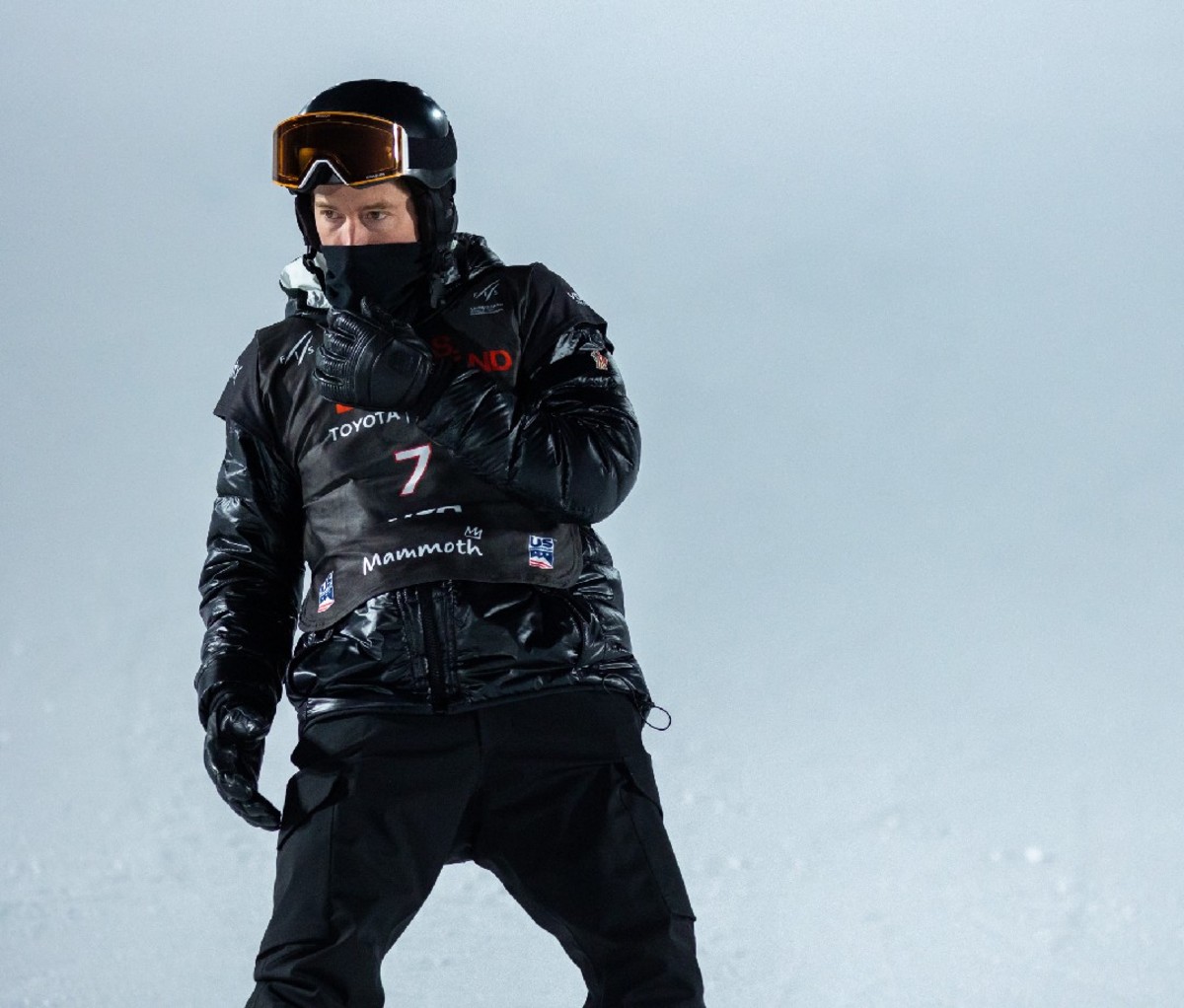
Shaun White, 35, San Diego, CA.
Three-Time Olympic Superpipe Gold Medalist
Shaun—you’ve been to four Olympics; Torino 2006, Vancouver 2010, Sochi 2014, PyeongChang 2018. You’re still battling for your chance to ride in the Olympics for a 5th time. How is snowboarding going for you these days?
Shaun White: I had a weird start to the season at the US Grand Prix at Copper Mountain in December—having to deal with those first competition nerves that we pretend not to have. It wasn’t the best, but I did accrue some points. Moving onto the next contest, I was super fired up for the Dew Tour event before the holidays. Things were going great, my practice runs were on point—and then in the Finals practice I broke a binding. We switched to a new pair. Then I felt another crack in my binding. This never happens and it happened twice, which just kind of threw me. Ultimately, I was left to focus on my third run, asking myself—“What’s most important right now? Go for the win by putting in a riskier run or put down something solid, get some points, and move on to the next.” I came together with my US Snowboarding coaches JJ Thomas and Mike Jankowski at the top of the pipe and we went with the latter. Bur whenever I’m holding back, it’s never as good as when I’m going for it. Since then, It’s been a whirlwind. Mammoth was supposed to be the last Olympic qualifier event technically, but apparently now the Laax Open in Switzerland will have bearing on who’ll be on the US Olympic Superpipe team. This last Grand Prix is a major one for the US but it’s good to know there’s another chance.
Is your mindset any different these days—battling for a position on the US Team for Beijing 2022 compared to being a lock leading up to Olympics past?
My goal is the Olympics. It doesn’t matter to me how I get there, as long as I get to where I’m going and do what I want to do. When I was younger, if I lost a single event it was the end of the world to me. Now, I’ll take the third and move on. I’m just getting what I need. This isn’t the big day. This isn’t the big show. That will happen in China. I want to peak when I get there.
You’ve had a lot of fun and success in Mammoth’s Superpipe. What sets this place apart?
It’s Mammoth—we love Mammoth! It just feels like home court here. This is my turf, where I grew up riding, and y’know sleeping in a van in the parking lot to just still being here and competing. There are a lot of roots here. I even owned part of the mountain for awhile. Mammoth is just a special place, and I’m excited about being here. Frank Wells is cutting the Superpipe and he did a really good job. We’re all looking forward to getting in there to snowboard.
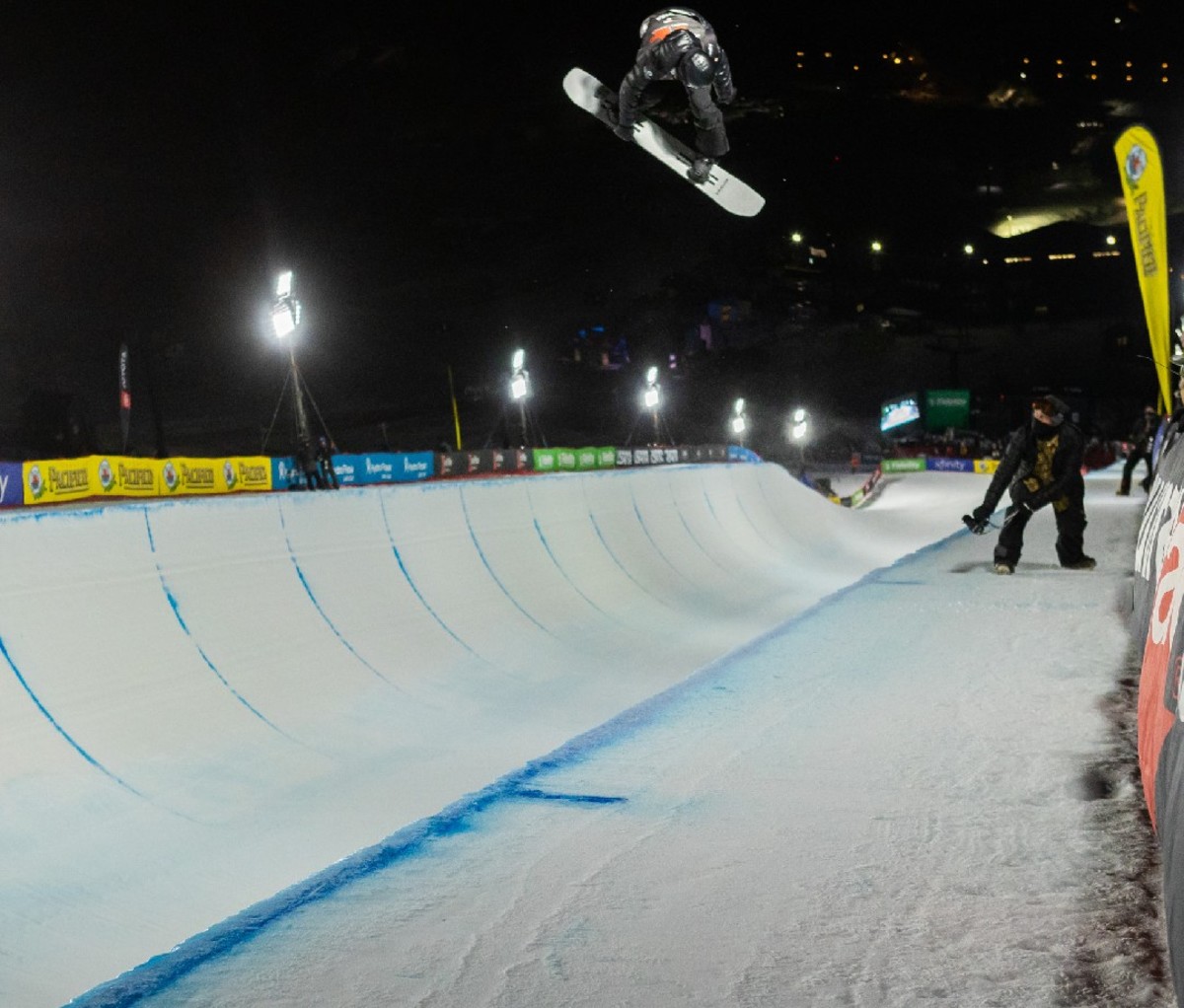
What are you seeing elevate the progression in Superpipe snowboarding? Tricks? Style?
I’m always trying to push the envelope to do something new. Doing the 1440s is still really hard. Riders are still struggling to master these tricks, and do it in their runs. I’m pretty sure two 1440s and two 1260s in the last Olympic run would have won those competitions, or at least taken second place. The progression has moved but it hasn’t dramatically jumped. Obviously with the triples it’s really incredible—something I tried in 2013, and the first attempt didn’t go so well. I came back, tried it like three more times, and got close to dialing it in. Then a fellow competitor does a DoubleCork 14. Okay, well, why go triple when you can kind of do this double and it’s the same amount of spinning? I mean obviously doing the triple is insane, and it’s where the sport’s going, but you have to put in a run, under pressure, when it counts and that’s not easy to do. I remember having seasons where I was trying the new big trick and kept falling while everyone else kept winning because I was going for something new. I think going big, doing clean tricks, and landing smoothly on the walls—all those things still come into play.
What kind of training regimen keeps you fit for this level of competition?
Lots of people think it’s about going crazy in the gym. I don’t really feel it’s about that. It’s about finding a consistency. I didn’t realize that for a while because I used to hate the gym. I’d go in there with a trainer and think I have to beat myself up. I’d be so sore the next day to go skate or surf. I wouldn’t be able do the things that I wanted to do for fun. I realized If you actually have a great trainer who eases you into it with lighter workouts to build up strength over time, it helps with other things in life. I think subtle course corrections can get you to where you’re going and achieve more than you think. You don’t have to make this dramatic change, but just know that you’re going to stick with it. The biggest change for me is just to consistently work out.
After having multiple Olympic experiences What does another shot at the Olympics mean to you now?
I’ve obviously been there, done it, and did it again and again. It’s been amazing. I think it’s something special just to go to the Olympics, be an Olympian, and play a part of history. The fact that I can potentially go again is amazing. It’s like the Rocky movies. He doesn’t win the first time. It’s all about who he becomes. It’s all about the journey. Also, it’s the Olympics, so you just feel like you’re part of this bigger thing. In snowboarding there’s no team really—until you go to the Olympics and now you join not only the rest of the snowboarding team but the entire U.S. Team. All of these people who are best in what they do. You’re a part of that group, wearing the same outfit. I’ve just related it to movies. It’s like that scene where the astronauts are walking out. Like Bruce Willis in Armageddon heading out to save the planet. It kinda feels like that. It’s just such a fun experience.
from Men's Journal https://ift.tt/3GwBvDK







0 comments